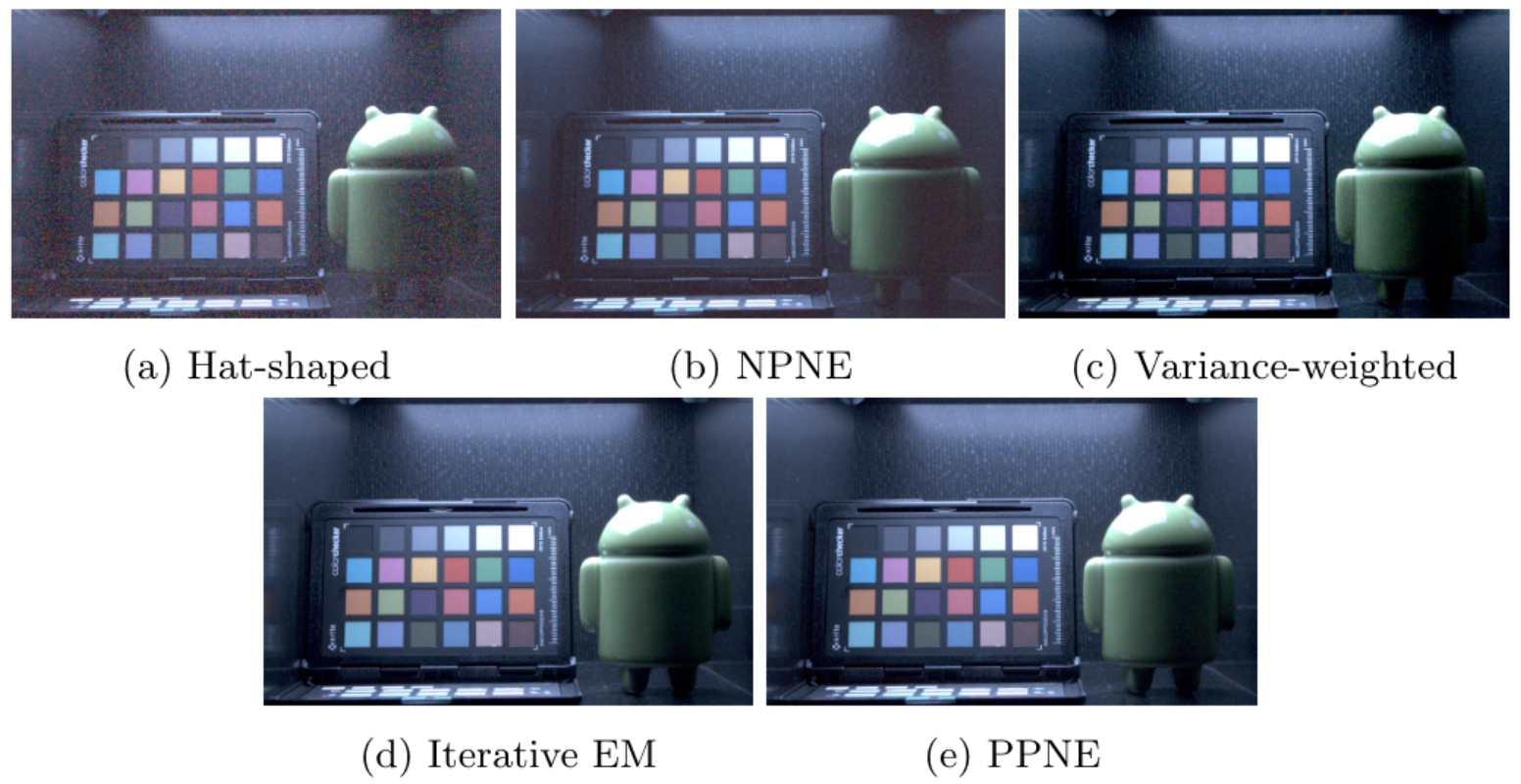Projects
Noise-Aware Merging of High Dynamic Range Image Stacks without Camera Calibration
Abstract
A near-optimal reconstruction of the radiance of a High Dynamic Range scene from an exposure stack can be obtained by modeling the camera noise distribution. The latent radiance is then estimated using Maximum Likelihood Estimation. But this requires a well-calibrated noise model of the camera, which is difficult to obtain in practice. We show that an unbiased estimation of comparable variance can be obtained with a simpler Poisson noise estimator, which does not require the knowledge of camera-specific noise parameters. We demonstrate this empirically for four different cameras, ranging from a smartphone camera to a full-frame mirrorless camera. Our experimental results are consistent for simulated as well as real images, and across different camera settings.
Video
Downloads
Bibtex
@inproceedings{hanji2020noise,
author = {Hanji, Param and Zhong, Fangcheng and Mantiuk, Rafa{\l} K.},
title = {Noise-Aware Merging of High Dynamic Range Image Stacks without Camera Calibration},
booktitle = {Advances in Image Manipulation (ECCV workshop)},
year = {2020},
publisher = {Springer},
pages = {376--391},
url = {http://www.cl.cam.ac.uk/research/rainbow/projects/noise-aware-merging/},
}
Acknowledgement
This project has received funding from the European Research Council (ERC) under the European Union’s Horizon 2020 research and innovation programme (grant agreement N◦ 725253–EyeCode).


